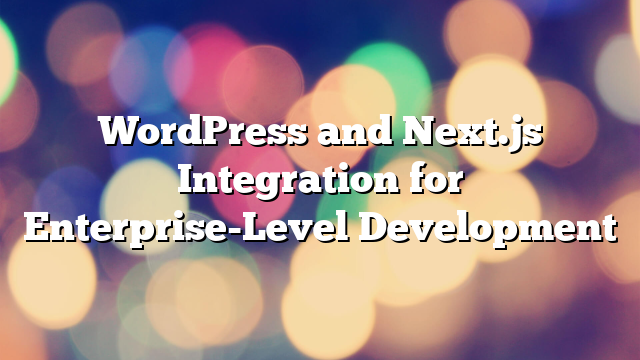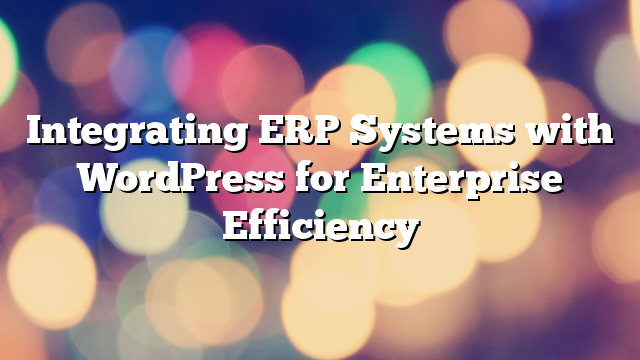WordPress and Next.js Integration for Enterprise-Level Development
07.10.2024

In the realm of enterprise-level web development, combining the strengths of WordPress with the speed and flexibility of Next.js offers unparalleled advantages. This approach empowers developers to leverage the robust content management capabilities of WordPress while ensuring high performance, scalability, and dynamic rendering through Next.js.
Why Integrate WordPress with Next.js?
As enterprises grow, so do their requirements for scalability, speed, and SEO optimization. Traditional WordPress setups, while powerful, may face performance limitations when scaling to meet the demands of large traffic websites. Here’s where Next.js comes into play:
- Improved Performance: Next.js offers server-side rendering (SSR) and static site generation (SSG), leading to faster page loads and better user experience.
- SEO Optimization: With Next.js, pages are rendered server-side, which allows search engines to crawl content more efficiently compared to traditional client-side rendering methods.
- Scalability: By decoupling the frontend from the backend, your site can handle increased traffic more efficiently, making it a great solution for enterprise-level demands.
How the Integration Works
Integrating WordPress and Next.js typically involves using WordPress as a headless CMS. In this architecture, WordPress handles the backend, storing content and managing users, while Next.js is used to render the frontend.
Here’s a step-by-step overview of how the integration works:
- Set Up a WordPress API: Using WordPress’s REST API or GraphQL (with a plugin like WPGraphQL), you can expose content from WordPress that Next.js will consume.
- Create the Frontend with Next.js: Next.js fetches the data from WordPress and renders it dynamically or statically, depending on your preferences.
- Server-Side Rendering (SSR) or Static Site Generation (SSG): With Next.js, you can choose between SSR for dynamic content or SSG for improved performance on static content pages.
Benefits of Headless WordPress with Next.js
Moving to a headless WordPress architecture with Next.js brings several key advantages, especially for enterprises:
- Enhanced Security: By decoupling the frontend from WordPress, you minimize the risk of direct attacks on your WordPress installation.
- Seamless API Integration: Next.js easily integrates with third-party APIs, making it a versatile choice for enterprises looking to build complex applications.
- Faster Development Cycles: Developers can work on the frontend independently of the backend, speeding up the overall development process.
Best Practices for Enterprise-Level WordPress and Next.js Integration
To maximize the benefits of WordPress and Next.js integration, consider the following best practices:
- Optimize API Requests: Use caching layers such as Redis to minimize repeated API requests and reduce server load.
- Utilize Static Site Generation (SSG): For pages that don’t require frequent updates, SSG can significantly improve page load times and reduce server strain.
- Focus on SEO: Ensure that metadata, schema markup, and other SEO elements are correctly rendered in your Next.js pages for optimal search engine visibility.
- Monitor Performance: Use tools like Lighthouse or Web Vitals to regularly assess and improve performance.
Conclusion
Integrating WordPress with Next.js opens up a world of possibilities for enterprises seeking to scale their digital presence. By leveraging WordPress as a headless CMS and using Next.js for modern, performance-oriented frontend development, your enterprise can achieve new levels of agility, scalability, and security.
Ready to take your enterprise website to the next level? Explore more about WordPress and Next.js integration services at AllWebDev.



